*This post may have affiliate links, which means I may receive commissions if you choose to purchase through links I provide (at no extra cost to you). As an Amazon Associate, I earn from qualifying purchases. Please read my disclaimer for additional details.
Ripping out your old decking is tough work, but if you won’t to save those decking boards, it can be a little tricky. Despite the security that nails provide to keep deck boards in place, it is possible to remove nailed-in deck boards without damaging the wood.
The best way to remove deck boards with nails and mitigate any damage done to the boards is to use the claw of a hammer. If you insert a piece of thick fabric or a block of wood underneath the head as you pry the nail up, the deck boards should remain unmarred.
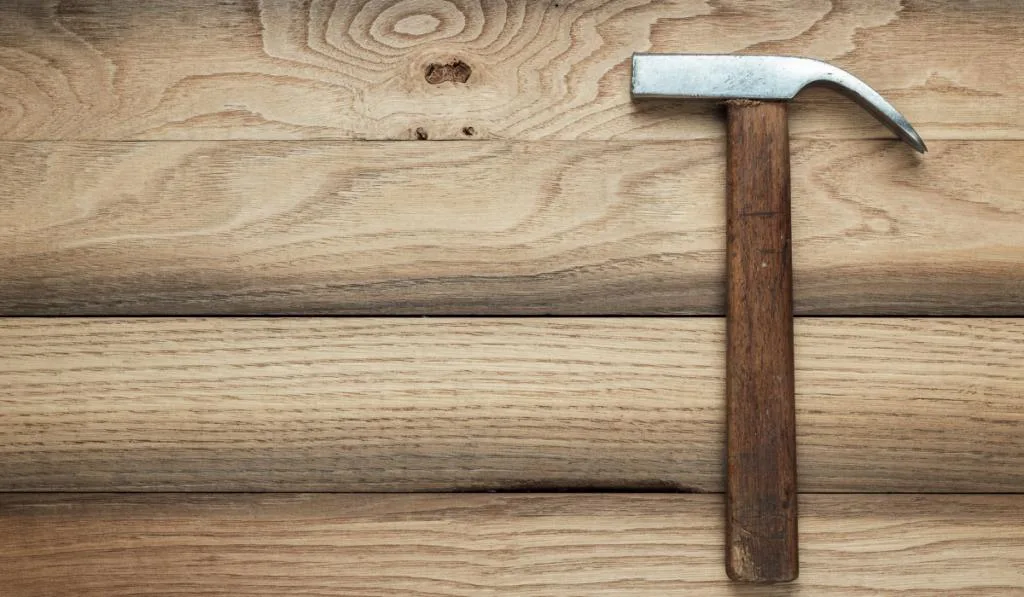
Gently rocking the nail side to side will also help extract it without tearing an unnecessary gash in the wood.
In this article, we will discuss various topics regarding the removal of nailed-in deck boards such as how to remove them without taking out the nails, what are the best tools to use, and if you should call a professional.
Additionally, we will address what to do with stubborn nailed-in deck boards, if you can reuse deck boards, and how to remove flush and sunken nails.
Table of Contents
How Do I Remove Nailed-In Deck Boards Without the Taking Out the Nails?
Technically this method does cause some damage to the deck board, but if you do it correctly, the deck board will still be usable albeit a bit shorter. The way to avoid prying out the nails of your deck board is simply by cutting the board out around the nails. If you can live with shorter deck boards, this will be the easiest way to avoid dealing with nails.
With a circular saw, you can cut the boards without touching the nails. By extracting the boards this way, you also have a stronger end product because nail holes create weak spots in the board where they can crack and split. By cutting the board you still have a whole piece that should be uncompromised.
What Are the Best Tools for Removing Deck Boards with Nails?
There are several tools you can use to remove the nails from deck boards. The claw of a hammer or any other tool such as a crow bar will allow you the greatest leverage and the least amount of damage.
As long as you insert a buffer underneath the head to save the deck board, you should be able to pry the nails out without damaging the board.
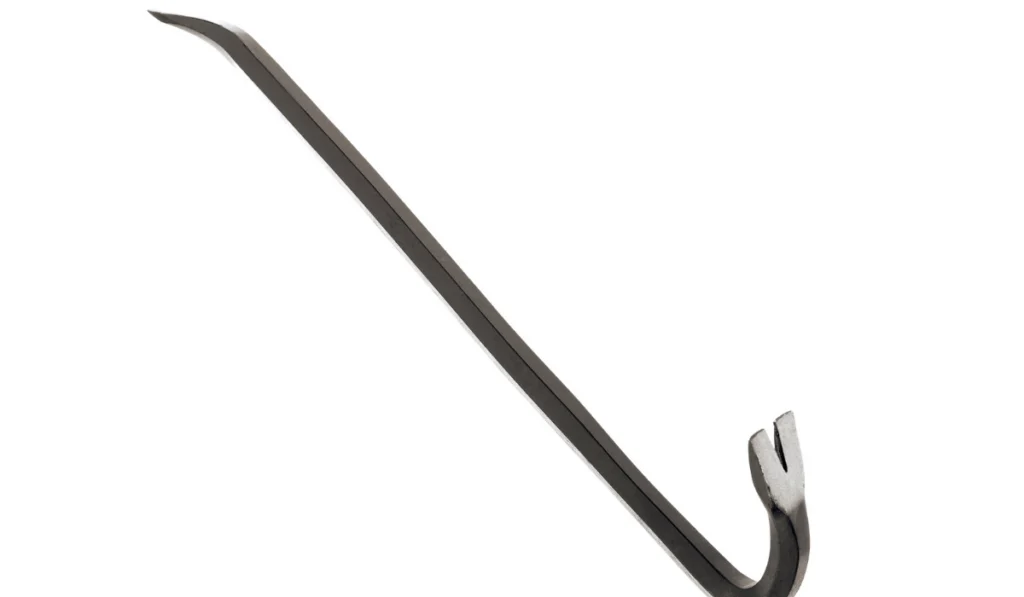
A cat’s paw tool can also come in handy as it applies similar principles to a hammer’s claw. Although, sometimes you need to dig into the wood a bit around the nail head with a cat’s paw so that may not be preferable if you are trying to avoid any damage to the deck board.
Another tool that can work is a pair of nippers.
You can completely pull the nail out by the head with these. Alternatively, you can snip off the head of the nail and pull the nail through the decking if you have access to the underneath.
Should I Call a Professional to Remove My Deck Boards with Nails?
If you are worried about damaging your deck boards or the nails are putting up too much of a fight, calling a professional contractor to remove your decking is always an option. The advantages to using a professional are experience and equipment.
A contractor is much more likely to have ripped out decking before and knows how to manage taking out even stubborn nailed-in boards without damaging them.
In addition to experience, contractors generally have better tools to take care of tough jobs and the ability to give you the outcome you’re looking for.
If you are still bound and determined to remove the deck boards yourself, you can still call a professional contractor and ask for advice on how to remove the decking without damaging it.
They may be able to provide helpful tips or point you in the right direction of what tools to buy or rent for the job.
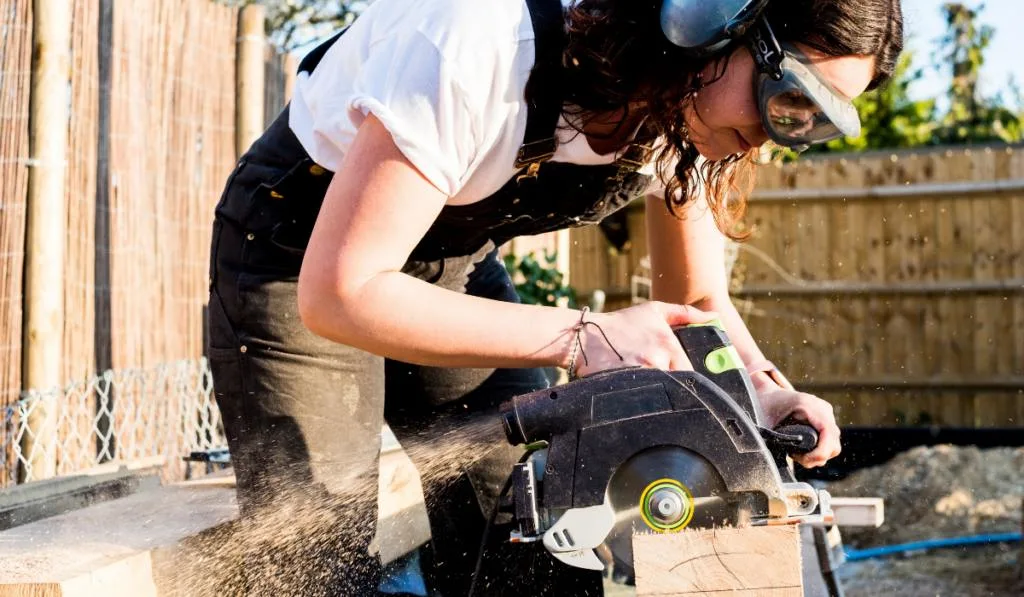
What If My Nailed-In Deck Boards Won’t Budge?
If the deck boards are stubborn because they’ve been there a long time and have settled into the joists, you may need to get creative. Leverage is going to be the key to removing those boards.
If they are rotted, there may be no point in saving them. If they are still good, then they should have enough strength to withstand a little bit of force.
If you slip a long strong board in between the joists and the decking, you may be able to pry the old boards loose. Even if you only wiggle them a bit, it may give you enough of a start to try using a hammer or crow bar to pry out the nails.
Once the boards aren’t as set into place, they will be easier to pry out with conventional methods.

Can Undamaged Deck Boards Be Reused?
If you are able to salvage your nailed-in deck boards by not damaging them upon removal, you can reuse them. Depending on the manufacturer’s date, the chemicals used to treat the wood, and the condition they are in, they can be reused for decking.
Alternatively, deck boards can be repurposed for other projects such as building a dog house, raised garden beds, or outdoor shelving.
It may be wise to cut off the ends with the nail holes because these can provide weak spots that may encourage cracking, splintering, or splitting of the boards.
Alternatively, the nail holes could prove useful if you need them for a creative project. Whatever you plan to do with your used deck boards, make sure that the wood is appropriate for it so there are no safety issues.
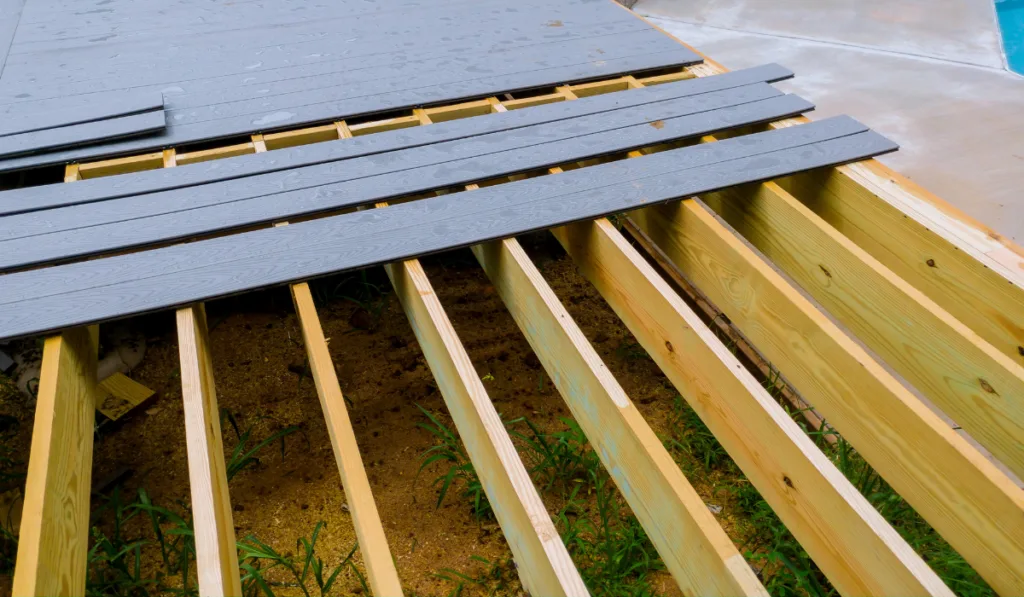
How Do I Remove Deck Board Nails That Are Flush?
If you encounter a job well done on your decking it may be a headache for deck board removal. Nail heads that are completely flush with the boards will not catch on the hammer claw or crow bar.
Nippers may be able to tease the nail head out. A cat’s paw can also dig into the wood to get the nail head started, although it might gouge the deck board a bit.
Sometimes you have to get a little fancy with your basic tools. To encourage a flushed nail to come out of hiding, you may need to use a flathead screwdriver like a chisel.
Set the screwdriver tip against the flush nail head and bang on the handle with a hammer or mallet. Continue to do this while working around the head of the nail.
Eventually the head should slowly pull up enough so that you can slip the hammer claw underneath and pry it out.
Although this method shouldn’t cause as much damage as a cat’s paw, it may still gouge the wood a little.
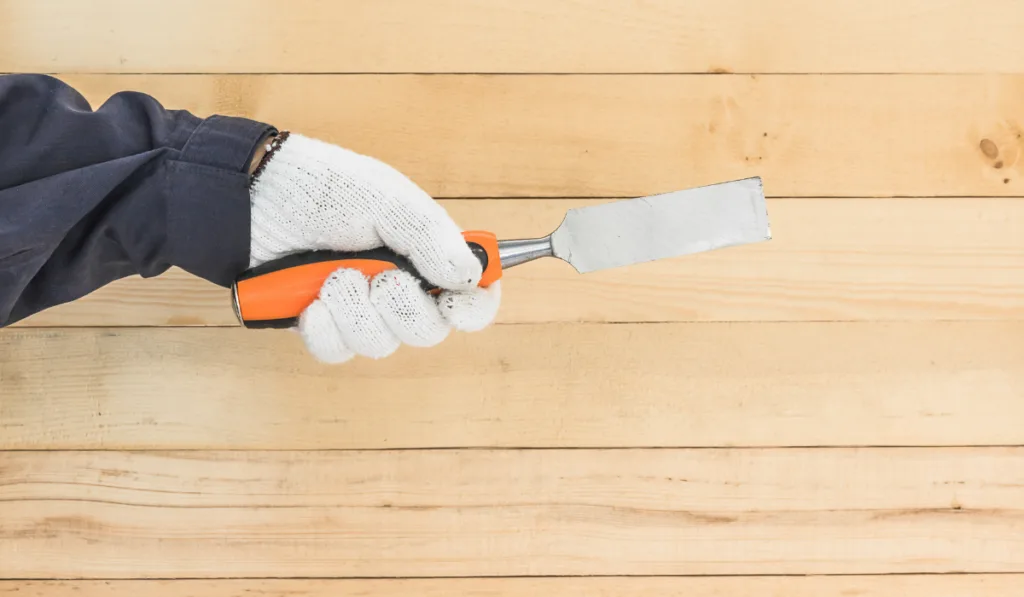
How Do I Remove Sunken Deck Board Nails?
Nails that are sunken into the deck board may seem impossible to remove but there are methods to getting them out. Since the nail head is not in a position to be gripped, pried, or even coaxed out, the best way to get rid of it is to keep pushing it in.
With a nail jack or a nail kicker you can drive the nail deeper into the deck board until it essentially pops out the other side and is only attached to the joist.
By doing so, you may damage the board especially if you are not careful with your aim. The hole in the deck board will be wider than it originally was.
Alternatively, you could fall back on just cutting the deck board. Don’t even bother with messing with the nails at all and just use a circular saw to slice into the board around where the nails are embedded.
Either method may end up damaging the deck boards, but if you have sunken deck nails, it’s highly unlikely that you could pry those boards out perfectly whole anyway.
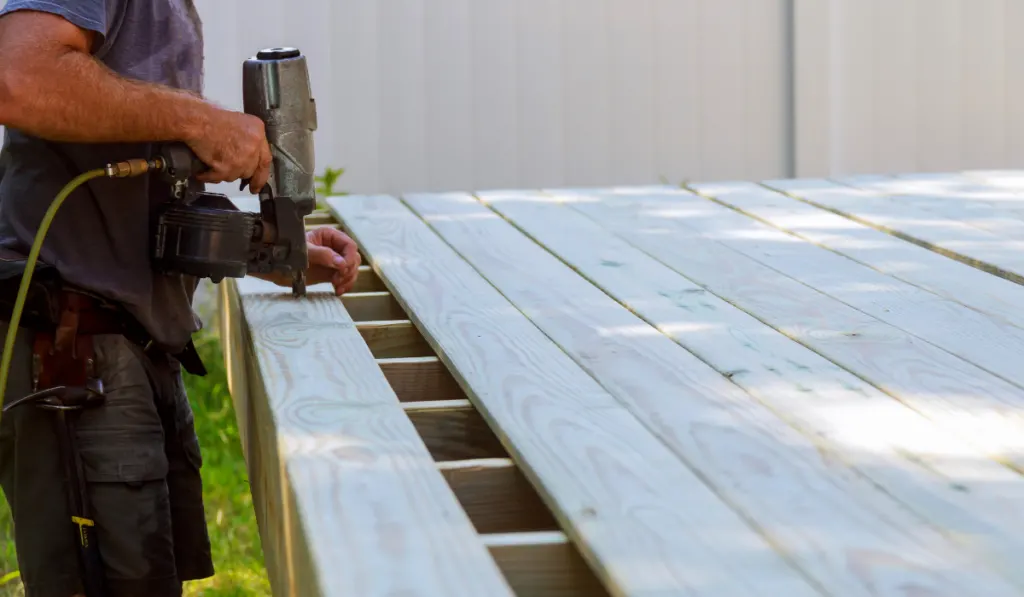
Conclusion
It is more than possible to remove old nailed-in deck boards without damaging them and most of the time all you need is a hammer.
As long as you remember to buffer the decking with a wood block or fabric under the hammer’s head, you can gently pry the nails out and still be able to reuse the boards.
For nails that are sunken, flush, or stubborn to get out, you may have to use more drastic measures. It’s still possible to remove deck boards without damaging them, although the probability of damage in these scenarios is much higher.
Your deck boards can be reused for decking or other projects as long as the wood is still in good condition. The best way to ensure stable boards may be to cut the boards out instead of prying the nails.
When all else fails, you can call a contractor to remove your deck boards if you want to ensure a job well done because they will most likely have more experience and better tools for the job.
